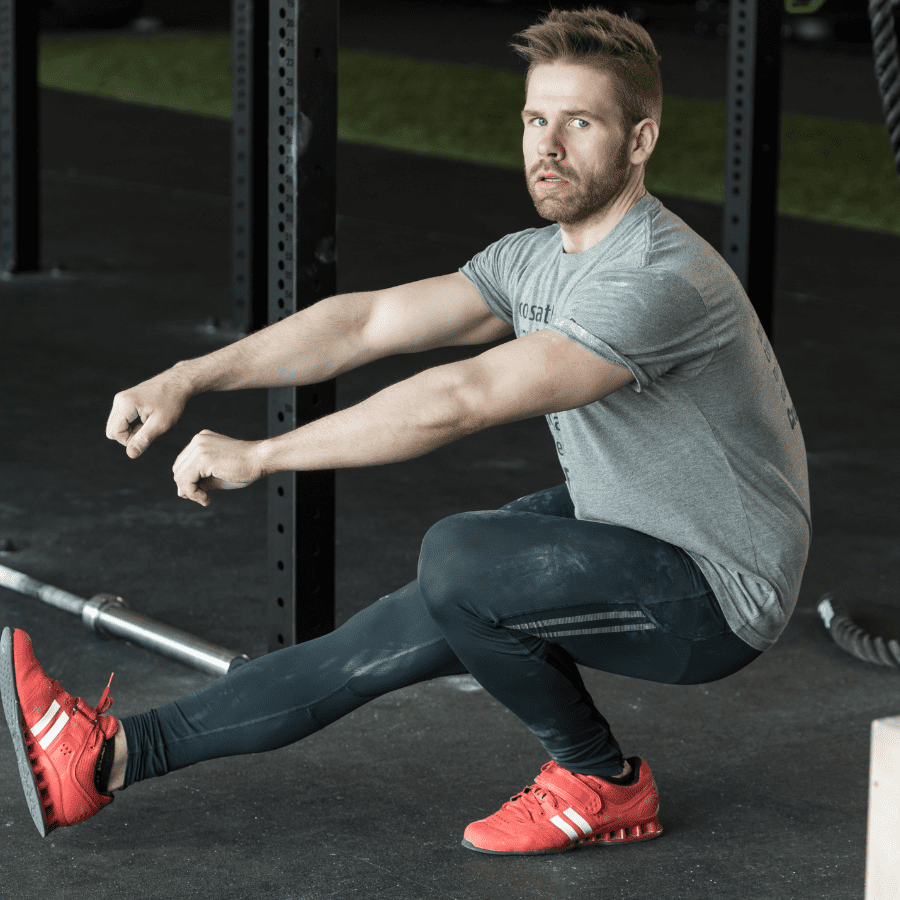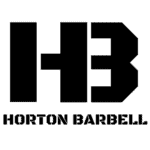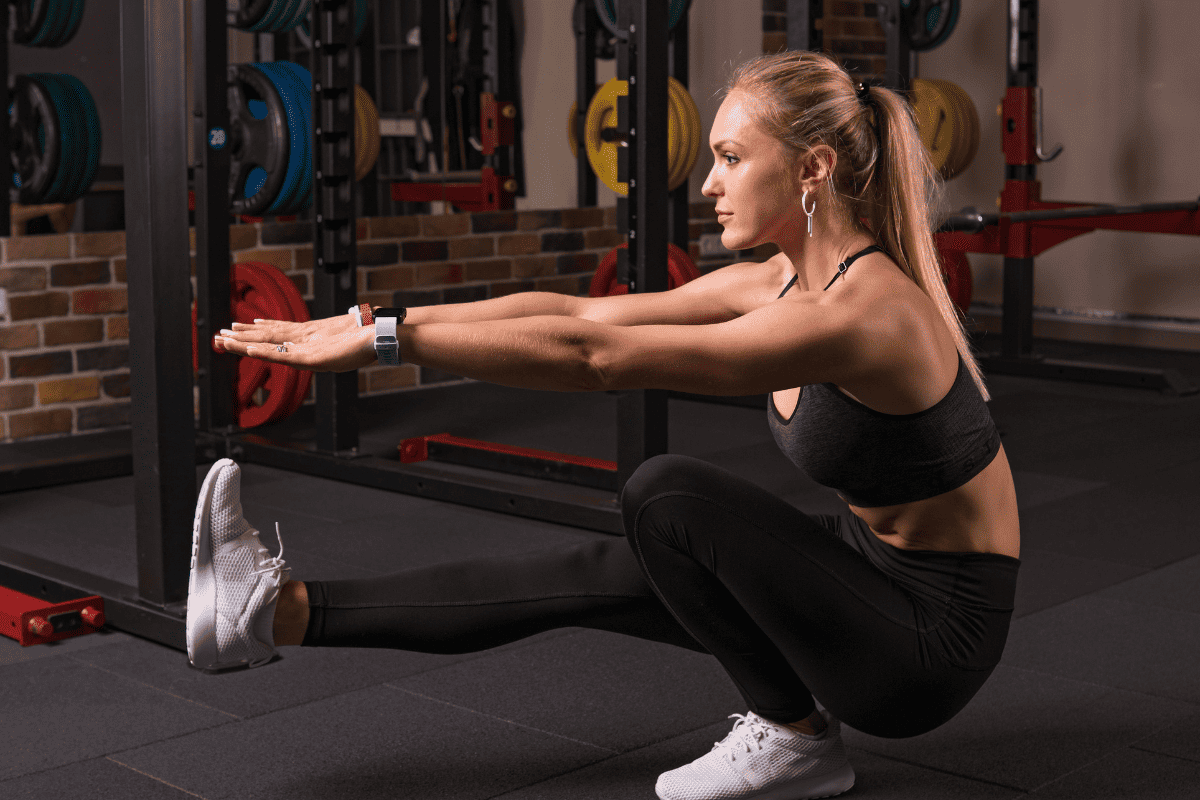Pistol Squat vs Skater Squat (Differences, Pros, Cons)
The Pistol Squat and Skater Squat stand out as two powerhouse movements that can elevate your strength program. Both exercises are renowned for their ability to target key muscle groups, enhance mobility, and improve overall athletic performance.
But when it comes to optimizing your training plan, which one takes the crown? Join me in this comprehensive comparison, where I’ll dissect the mechanics, benefits, and best practices for each.
Whether you’re an athlete striving for peak performance or someone looking to level up in the gym, understanding these exercises is key to maximizing your training program.
Let’s start with the Pistol Squat.
Pistol Squat

Equipment Needed
- None (If doing a modified Pistol Squat a box or bench to squat to will be needed)
Instructions
On Air
- Stand on one leg with the opposite leg straight and slightly out in front of the body.
- Squat down on the single leg by hinging back at the hips first and then bending the knee and hips until the crease of the hip crosses below the knee.
- Keep the heel flat and your weight distributed between your heel and mid-foot.
- Keep your torso as vertical as possible while maintaining balance and a flat foot.
- The opposite leg should stay straight and extend out in front of you as you squat down (tight hamstrings will make this almost impossible!)
- Once you reach the bottom of the squat, drive the foot through the floor and stand tall.
To Box
- Instructions are the same as above, except the athlete will squat down to a box (or bench) instead of freely in an open space.
- Make sure the foot is close enough to the box so that the box is not missed when squatting down to touch it. (I’ve seen it happen)
- Control the descent to the box and sit as softly as possible. A light touch-and-go is ideal if possible. My favorite cue for this was to “treat the box like a glass coffee table.”
Coaching Points
If you’re not able to do a Pistol Squat the first time you try, don’t worry, you’re not alone. Most athletes I’ve worked with have to start by using a bench for pistol squats. The first thing you need to do to start progressing is figure out where your real weakness is: strength or flexibility.
Some lifters simply don’t possess the strength at first to perform a full pistol squat on air. On the other hand, many of the athletes I’ve coached actually have the strength to do a pistol squat, but they lack the mobility to be able to go through the full range of motion without falling or their opposite foot crashing into the ground.
Figuring out where to focus your energy is the first step toward improving your Pistol Squat.
Benefits of Pistol Squats
Some potential benefits of pistol squats include:
- Improved balance and stability: Because Pistol Squats require you to balance on one leg, they can improve your balance and stability.
- Increased lower body strength: Pistol squats work all the muscle groups of the legs, including the quadriceps, hamstrings, and glutes.
- Improved flexibility: Pistol squats require a good range of motion in the ankles, knees, and hips. Doing this exercise can help to improve the flexibility of these joints.
- Enhanced core strength: Pistol squats require you to engage your core muscles to maintain balance and stability. As a result, they can help to improve the strength of your core muscles, including the muscles of the abdomen and lower back.

Tired of coming up with your own workouts? But don’t want to pay an arm and a leg?
I post workouts 5 days a week right here. (Did I mention they’re free?)
Skater Squats
Equipment Needed
- None
Instructions
- Squeeze the shoulder blades and engage the lats to create a stable back to help with bracing the upper body
- Step backward with one leg, but do not place the foot back down on the ground.
- Instead, keep the chest as upright as possible and drop the back knee until it lightly touches the ground.
- Now drive through the heel and midfoot of the front foot to drive yourself back up tall.
- Repeat on the opposite leg and alternate back and forth until all reps have been completed.
Coaching Points (Fixes to Common Mistakes)
Keep the front foot flat on the floor when in the lunge position. One of the most common mistakes is raising up onto the ball of the front foot.
If you’re not able to do Skater Squats with good form, switch to a regular Reverse Lunge until you’re ready to do Skater Squats with proper form.
Benefits of Skater Squats
Single Leg Movements like Skater Squats are an extremely important addition to any athlete’s workout regimen, regardless of sport (They’re also extremely beneficial for day-to-day activities for non-athletes as well).
Many (if not most) athletic movements are often done on one leg. This includes sprinting, jumping and cutting.
Single Leg Exercises help improve leg strength, balance, stability and also show any strength imbalances the lifter may have from one side to the other. Single Leg Exercises can also be part of the solution if and when an asymmetry is found.
Skater Squats have the added benefit of reducing some stress on the knees. Stepping backward takes away the forward momentum that is generated during forward lunges. This can make a notable difference in the amount of stress you feel on the knees.
Pistol Squats vs Skater Squats: Is One Better?
Now, let’s take a look at the two exercises side-by-side to see if one is better than the other for certain situations.
Better for Developing Strength: Pistol Squats
Pistol Squats are superior to Skater Squats for developing strength for several reasons. First, the Pistol Squat requires a deeper range of motion, demanding more from the quadriceps, hamstrings, and glutes.
Secondly, performing a Pistol Squat necessitates significant unilateral strength, balance, and mobility, making it a more comprehensive exercise. As you lower down on one leg, the entire load of your body is placed on that single limb, pushing its strength capacity.
While Skater Squats are undoubtedly effective, the depth and unilateral demand of Pistol Squats make them a prime choice for those aiming to maximize their strength program.
Better for Beginners: Skater Squats
Skater Squats are often favored for beginners over Pistol Squats due to their accessibility and safety. For starters, Skater Squats don’t require the same degree of balance and mobility that Pistol Squats do, making them less intimidating for those new to advanced single-leg exercises.
Additionally, the Skater Squat allows for a more controlled descent, offering beginners a chance to build confidence and strength progressively. This controlled movement reduces the risk of injury, especially for those still working on their form and muscle activation patterns.
So, for those just starting out, Skater Squats can be a more approachable and safer gateway into unilateral leg exercises.

Get Shredded… For Free
Get a free workout Monday through Friday, posted right here on Horton Barbell. These workouts are designed to help you get strong, in shape and look great at the beach!
More Links and Info
Check out some more head-to-head comparisons of single-leg exercises:

